We live in an experience economy, thanks to the Internet. We read and compare products and services in our own time, rather than being pressured into action by biased salespeople. After the Web 2.0 revolution, we can also share our own ratings and reviews. This was the game changer that went on to power the social media juggernaut. Customers now expect near magical experiences every moment they are online, and they can be very unforgiving when things go wrong.
In reality, customers are now better informed, and are less likely to get ripped off or encounter poor service. There is now a constant feedback loop, which businesses can either choose to embrace or ignore at their peril.
With faster time to market, many start-ups are disrupting well-established brands. A product or service offering can quickly be copied, costs reduced, and services improved upon by agile businesses. The only battleground, outside of the cost race to the bottom, is the ability to produce participation-based services resulting in deepened loyalty. Businesses face a stark choice: make rapid change or face immediate extinction.
What Is Customer Experience (CX)?
Business people talk a lot about the customer journey, but when asked to walk through it they can’t – it doesn’t exist in their organizations, or if some form of it does, then it’s an aesthetic exercise rather than being of value.
Customer experience is intentionally capturing what happens over time:
- To the actor (employees, prospects, customers, partners)
- Today (the as-is state)
- Tomorrow (the to-be state)
At all stages of the CX lifecycle, the following actions are typically taken by customers:
- Discover – finding the brand
- Decide – reasons to choose the brand
- Purchase – specifying the product and checkout
- On-board – receiving the product and understanding it
- Use – enjoying and troubleshooting
- Review – replacing, upgrading, or end-of-life replacement
This lifecycle is channel-agnostic and relates to all customer segments. By understanding what capabilities and processes in the business result in what the actor sees (the evidence) and what they do (the action), the business can assess whether changes need to be made to:
- Produce a more positive emotional moment
- Reduce the number of steps
- Ensure first-time resolution is achieved
- Reduce costs for the business
This is different from User Experience (UX), where the consultant is concerned with systems – information architecture, usability, and design. These terms can be used interchangeably, but are quite different fields of skill and expertize.
In many businesses, customer experience has naturally fallen under the Marketing domain, as it has been incorrectly viewed as a sales tool – where the aim was to ensure the product or service was easy to purchase. In terms of organizational structure, many businesses today do not have a lead customer experience role, such as a Chief Experience Officer, or a team to support related activities. Instead the tasks are split across a number of roles, resulting in complexity of analysis and difficulty in making changes.
There are a number of metrics used to assess customer experience, from a one-size-fits-all Net Promotor Score (NPS) to detailed dashboards. The reality is there is no silver bullet and tracking data is only part of what’s required. Mindset and culture are internal drivers that result in excellent experiences and are more difficult to measure effectively.
A Never-ending Story
Businesses are continually changing and with organic change comes unintended problems, sometimes referred to as ‘friction’ – that is, the customer having to make more effort than is required. Understanding how everything fits together in the customer journey can initially feel like a simple task, but it’s not. The relevant information is often in multiple people’s heads. Journey-mapping can start by focusing on all the negatives – in that teams go looking for issues, rather than documenting the whole CX process. There will be market-leading experiences that need capturing too. It’s important to note that some frictions are intentional – so it’s not about attempting to create a completely ‘friction-free’ experience.
There is no magical way of extracting this knowledge. The task can feel so large it’s overwhelming. It’s difficult to know how and where to begin capturing the data, and once it’s captured how it can be continually maintained.
Digital At The Forefront
Historically, customer experience has been most concerned with Direct Mail communications (targeting) and Customer Services (contact centers), ensuring customers who had received specific offers could easily purchase or renew. It was straightforward to craft messages based upon product holding and/or geo-demographic segments using classification tools such as Experian Mosaic.
To successfully create experiences that meet people’s needs, and are useful and differentiating, digital offers a new design paradigm:
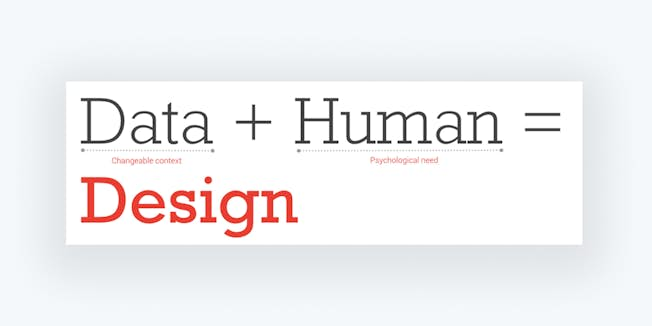
Customer experience today is about how to design organizational processes and services using both data and ‘the human’ that result in quality touch-points. It’s worth noting that this is not a static process, but a set of rules that constantly adapt to changing needs in as close to real-time as possible.
Only digital can capture, record, process, and use these insights to produce a personalized and relevant experience.
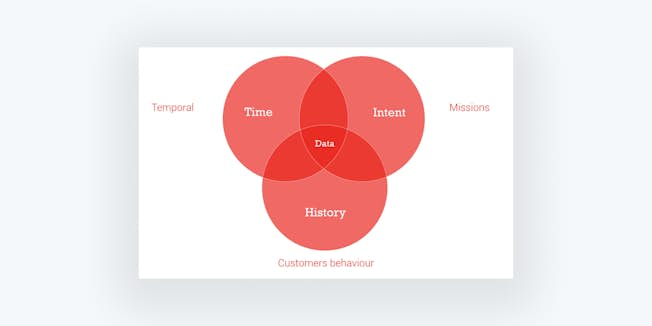
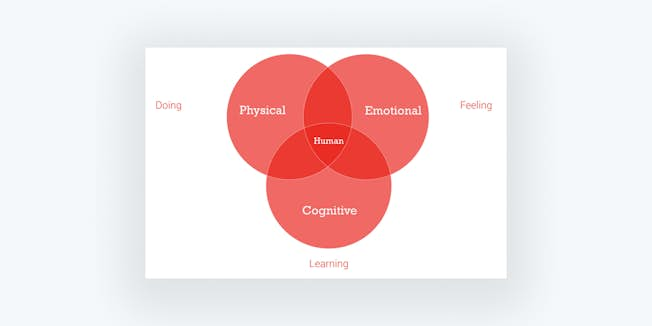
After looking at Figures 2a and 2b, consider how your own business captures this data and how it is used in real-time decision-making to create experiences. Do you have the appropriate technology? Are you making assumptions?
Data (changeable context) is a blend of three core elements:
- Time – time of day, day of week, weather, recency and frequency
- Intent – mission, search terms, previous campaign exposure, flow
- History – customer or prospect, new or returning visitor, previous visit patterns, previous product interest, previous purchases
Human (psychological need) is also a blend of three core elements:
- Emotional – feeling, psychological state, stress level, desires, wants, needs
- Physical – environmental factors, physical activity, habits, disabilities, preferences, sensory stimuli
- Cognitive – learning, assumptions, learning ability, education
These elements can be captured both implicitly and explicitly, but without them businesses are intentionally making themselves less relevant.
What Value Does CX Provide?
When you consider all the effort required in capturing the customer experience, one can be forgiven for asking, is it worth it? Should the business continue pumping its budget and resources into more sales and marketing activities?
First, acknowledge that businesses have an addiction to quick wins – the constant desire for small changes that companies’ use to prove they are being effective in the fight for survival. Retail as a category, it seems, finds it difficult to plan work beyond one week due to the high pressure to deliver numbers.
Second, consider a commitment to the long term. CX activities don’t deliver any type of immediate dopamine hit, but instead burn slowly.
The CXI (Customer Experience Index from Forrester) has a simple principle: the higher the score the more likely it is that:
- Customers will buy more products and services from you
- Customers will focus on you rather than switch to competitors
- Customers will recommend you to family and friends
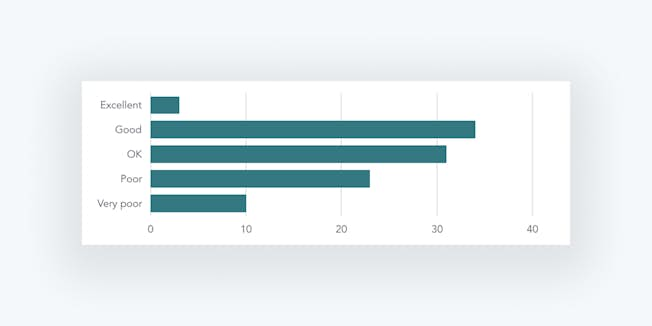

As a digital marketer, are there any other outcomes other than those listed above that are your ‘raison d’être’?
Some clever folks at Watermark Consulting compared the scores of businesses with ‘Excellent’ CXI scores to the S&P500 share index. Unsurprisingly, these companies massively outperform the laggards, by 22.5% to be exact.
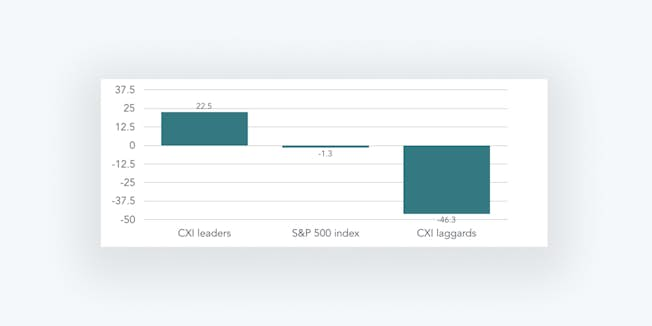
A study by Brandz found a correlation between emotional experiences and active cross-sell ratios and retention ratios. These peak-end (highly emotional) experiences can deliver monster results:
- 16% to 82% cross-sell ratio increase
- 30% to 84% retention ratio increase
It’s common sense: provide a customer experience that is better than the competition and perform better as a business. Most customer journeys are neutral to negative. There are very few moments of intentional positive experiences.
Improved CX offers the opportunity to increase shareholder value and to generate significant customer lifetime value (CLTV). Digital marketers today can lead the way on this.
How Can Digital Marketers Get Started?
The root of all experience design starts with the customer. It might sound ridiculous to a marketer, but knowing what customers’ goals are is critical. This is vastly different from segmentation. In terms of order, a business must firstly satisfy customer needs – it needn’t be pretty or easy, but systematically working through all needs and where they are satisfied is mandatory. This places a prerequisite on the marketer to have quality, primary-research-informed personas. Without them, it’s near impossible to do this task.
If you don’t have personas, start defining them now. When you think you’re finished, keep understanding the customer by observing and reviewing insights on a weekly basis. This may lead to running co-creation sessions that can generate significant innovative ideas.
The following framework shows experience maturity at three levels:
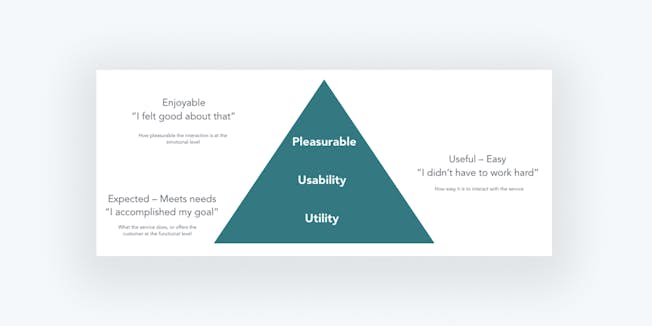
Businesses firstly need to completely satisfy the utility. One challenge is that this is not exciting, but involves doing the basics brilliantly. In a world filled with the latest AI, chatbots, and AR, it’s not instantly desirable to be completing such heavy-lifting, but knowing how the customer thinks and what they need will prove invaluable in the long run.
Once all needs are met, a usability audit can target areas that can make a business easier to deal with. Documenting and evidencing frictions can provide a rationale for introducing change. Achieving this takes time and requires sustained attention.
Finally, it’s time to take on pleasure – be that simple acknowledgements for loyalty or Easter Eggs to find or deep habit-forming participation-based services. These require significant strategic planning and cultural change across the entire organization.
A practical list of methodologies and tools include:
- Organizing idea – knowing and understanding the social mission
- Experience principles – how the brand manifests its value
- Journey mapping – documenting evidence, action, front stage, back stage, and capabilities with emotions
- Personas – primary-research-created tool
- Co-creates – idea generation working with customers
- Service Anticipation Gap assessment – the difference between the business as-is state to the to-be state
Get yourself and your business fit for the future. Be experience ready.
Upgrade to Power Membership to continue
your access to thousands of articles, toolkits, podcasts, lessons and much much more.
Become a Power Member- Login
- View Courses
- - - -
- Courses
- Resources
- - - -
- My Account
- Change Password
- Logout





